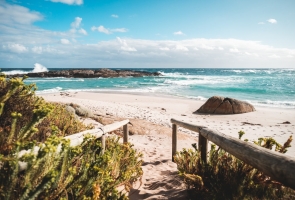Has your travel blog fallen flat? Are the same old strategies just not working to get people to read your blogs anymore? Chances are, there are a number of good reasons for this, not the least of which being that your blog just doesn’t really stand out. You’re using all the same strategies as your competitors, and probably some of the same content, and no one is paying attention.
Come on, admit it …
You’re still pulling content (or letting your writers choose your source content) that has been used ad nauseum on other blogs. You’re still paying for stock photos that people can see anywhere. You’re maintaining a business-as-usual approach to your blog. Here’s the problem: Business has changed quite a bit in just the last couple of years. Content marketers face much higher demands for quality, unique content.
As you read, ask yourself which of the following things are happening in your blog right now that need to be fixed. Don’t worry, I’m going to offer some advice on how to fix them as we go …
Too Many Shameless Plugs
There is nothing wrong with throwing a link in the direction of a sponsor or other industry authority, but there’s a problem. As soon as you start mentioning other businesses directly, two things happen. First, the majority of readers bounce. They came to your blog for inspiration, not a sales pitch. Second, you steer too much attention away from your own brand.
If companies or individuals want mentions in your blog, offer to sell them some ad space or let them know that your blog only links out to sites that are relevant within the current post. If you are working with travel copywriters or a travel copywriting service (which you should), write link placement into your brief and provide the sponsor link(s) you wish to have included. A competent writer with a little SEO knowledge should have a good idea of where to insert it for the best results.
Too Many Lists
Forget About “Top X” anything in your travel blog. It’s time we stop assuming what the most desirable destinations, activities, and attractions are going to be for your readers. Presenting content in this way actually detracts from any messaging that deals with your understanding of your audience. Instead of lists, provide more of a guided tour. Let the reader decide what the best hotel, beach, or night spot is according to his or her taste.
Another blog style that is gaining in popularity in the travel industry is storytelling. A narrative approach based on actual reviews can really draw readers in. Better still, you can curate a large portion of the content and isolate quotes from online reviews to which you think your readers would respond best.
As a last point here (and I cannot stress this enough), don’t create fictional experiences. The point here is to use a first-person approach to convey popular, positive opinions about a destination, activity, etc. You want the reader can to be able to relate to the point of view of the description, and you want to create a reasonable expectation of the experience should the reader decide to book with you after visiting your blog.
Too Many Recycled Keywords
This one is the absolute worst: using the same keywords over and over in hundreds or more pieces of content. Yes, it’s an extra step researching keywords for every piece of content, but it’s necessary. If you want people to find your specific content, you need to trust the major engines and include words the search bots say they’re searching to find it. Those details change rapidly — certainly rapidly enough to warrant the effort.
Too Much Hyperbole, Too Many Superlatives
Please stop telling people that at night the streets on a tiny island light up like the Vegas strip if they’re doing nothing more than streaming holiday lights. Please stop recommending the “best” anything unless there is reasonable cause based on reviews. There are some destinations with attractions that outstrip their competition by a huge margin, but that still doesn’t make them the “best.” Instead, try saying, “a majority of visitors seem to favor Chef Denier’s for their locally famous jambalaya.” Sounds way more credible, right?
Too Many Stock Photos
Instead of going to the big stock image mills, consider using more creative commons images in your blog. Good-quality amateur or semi-professional photos paint a more realistic picture of specific destinations and their attractions. Let your readers see how their vacation or holiday is going to look and feel. The more authentic your content, the more trustworthy it will be perceived to be.
A Final Word on Getting Heard
If you want your travel blog’s messaging to reach and engage more people, you have to break out of the travel blog rut and present something unique. Don’t sneak sales pitches into your posts. It’s been done. People hate it. Stop assuming you know what every traveler thinks is good, and appeal more to the emotion and perception of the reader when describing locations and attractions.
Choose your keywords wisely and research relevant ones for every post. Be careful that both your words and your images convey a realistic view of the subject and write copy around visuals whenever you can. This is way easier to do when you aren’t using stock photos.
Still need help? BeezContent is here to assist with all your travel blog copywriting and content marketing needs. Give us your ideas, your detailed brief, and a little creative freedom, and watch what a little attention to detail can do to boost your readership.




